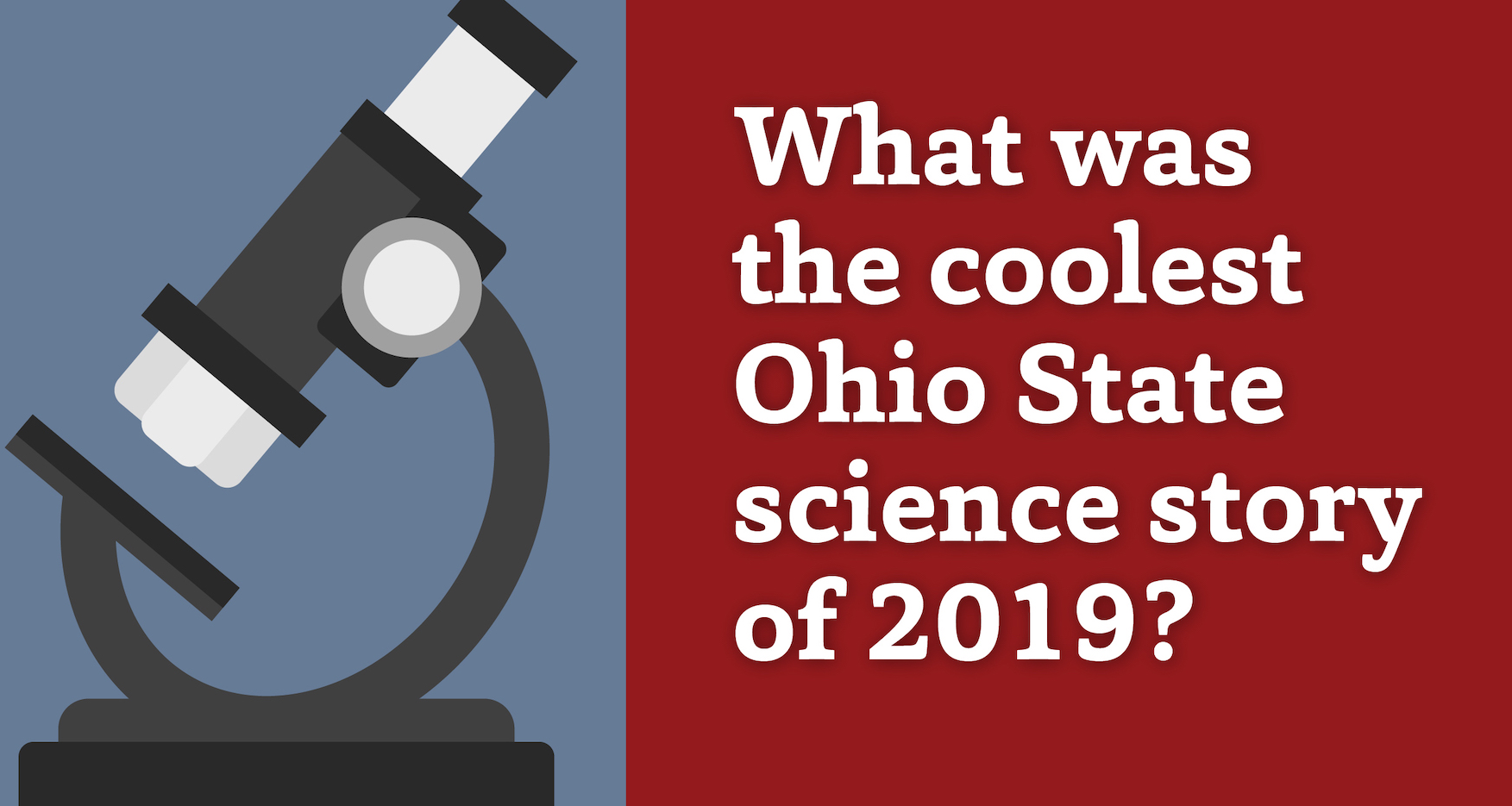We chose five of our favorites. You pick the winner.
Voting ends Dec. 31
During this past year Ohio State researchers published some 22,000 journal articles, about topics ranging from a new blood test for fibromyalgia to the 17 ways your face conveys happiness to how children notice everything.
And while we can’t cover them all, Ohio State News wrote about approximately 100 of those studies in 2019. We think all those stories are pretty cool. But we can’t help but think: Which one is the coolest? We selected five stories. We want to crown a winner (purely for bragging rights, and this very cool trophy), but we need your help.
Help us choose by voting in Ohio State’s second-annual “Coolest Science Story of the Year” competition. You can cast one ballot a day until the poll closes on Dec. 31. Scroll through the videos below to hear the researchers talk about their discoveries, and then vote. May the coolest discovery win!
The finalists:
Biodegradable plastic: The quest to keep plastic out of landfills and simultaneously satisfy the needs of the food industry is filled with obstacles. Researchers found a way to combine natural rubber with bioplastic to potentially replace some traditional plastics with a biodegradable, more environmentally friendly alternative. Read more.
Electroceutical bandages: Researchers published the first study of its kind to look at the ways electroceutical bandages – bandages infused with electricity – can kill bacteria around a wound, allowing wounds to heal faster. Read more.
Million-word gap: Young children whose parents read them five books a day enter kindergarten having heard about 1.4 million more words than kids who were never read to. This “million-word gap” could be one key to explaining differences in vocabulary and reading development. Read more.
New black holes: Astronomers found an entirely new set of black holes that, before their discovery, scientists didn’t even know existed. Read more.
Vampire bats: These blood-suckers help their neighbors in need even if it’s of no obvious benefit to them, and social bonds vampire bats form in captivity survive the transition to the wild. Researchers developed tiny backpack-like sensors to log the bats’ interactions in the wild. Read more.
Voting has ended! Please stay tuned for the winner.


